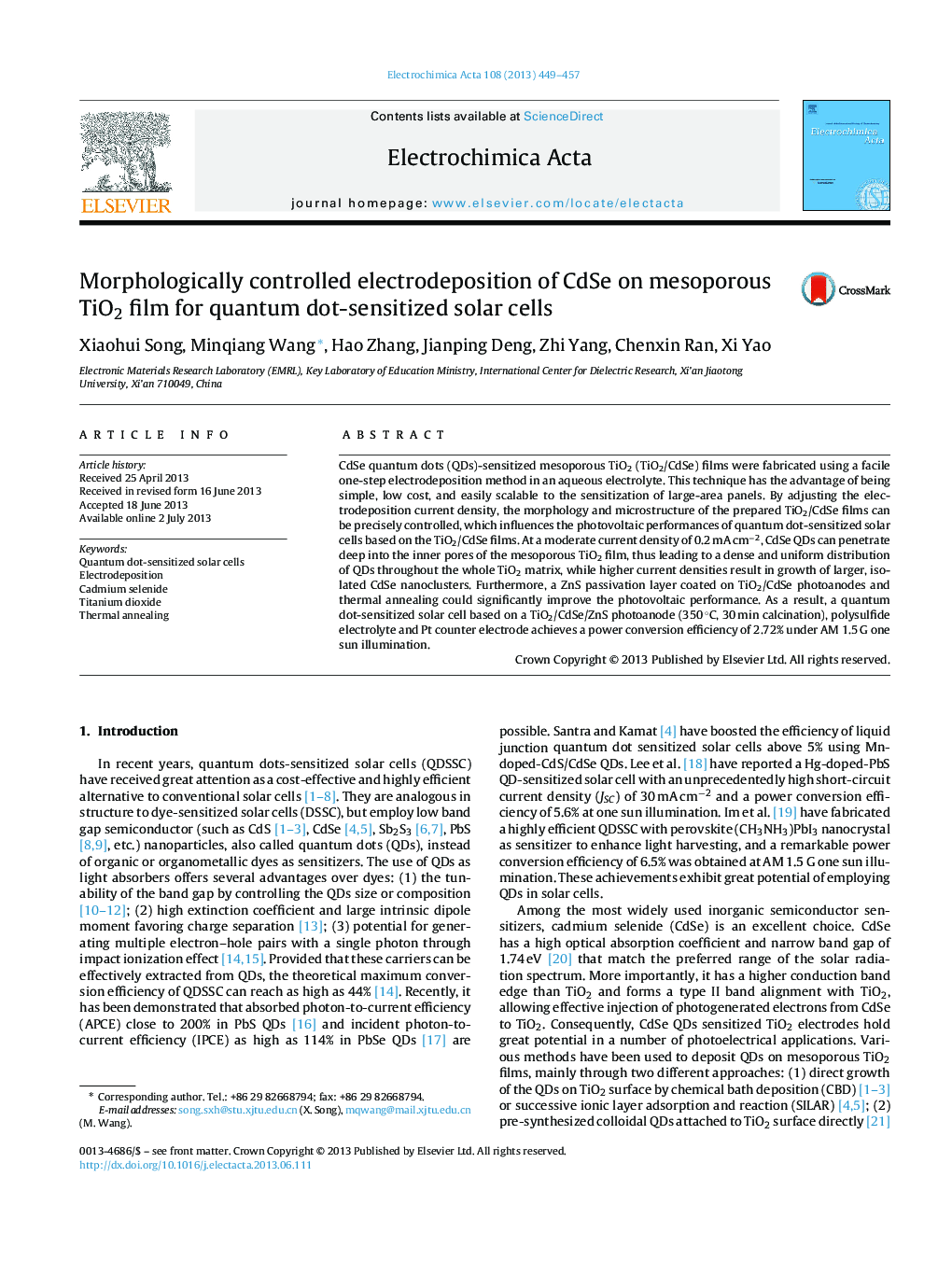| Article ID | Journal | Published Year | Pages | File Type |
|---|---|---|---|---|
| 186823 | Electrochimica Acta | 2013 | 9 Pages |
•CdSe QDs were deposited onto mesoporous TiO2 film via a one-step electrodeposition method.•The morphology and microstructure of TiO2/CdSe photoanodes can be controlled by electrodeposition current density.•A ZnS coating layer and thermal annealing could further enhance the performance of the TiO2/CdSe photoanodes.•A maximum power conversion efficiency of 2.72% was achieved with the optimum TiO2/CdSe/ZnS photoanodes.
CdSe quantum dots (QDs)-sensitized mesoporous TiO2 (TiO2/CdSe) films were fabricated using a facile one-step electrodeposition method in an aqueous electrolyte. This technique has the advantage of being simple, low cost, and easily scalable to the sensitization of large-area panels. By adjusting the electrodeposition current density, the morphology and microstructure of the prepared TiO2/CdSe films can be precisely controlled, which influences the photovoltaic performances of quantum dot-sensitized solar cells based on the TiO2/CdSe films. At a moderate current density of 0.2 mA cm−2, CdSe QDs can penetrate deep into the inner pores of the mesoporous TiO2 film, thus leading to a dense and uniform distribution of QDs throughout the whole TiO2 matrix, while higher current densities result in growth of larger, isolated CdSe nanoclusters. Furthermore, a ZnS passivation layer coated on TiO2/CdSe photoanodes and thermal annealing could significantly improve the photovoltaic performance. As a result, a quantum dot-sensitized solar cell based on a TiO2/CdSe/ZnS photoanode (350 °C, 30 min calcination), polysulfide electrolyte and Pt counter electrode achieves a power conversion efficiency of 2.72% under AM 1.5 G one sun illumination.
Graphical abstractFigure optionsDownload full-size imageDownload as PowerPoint slide
